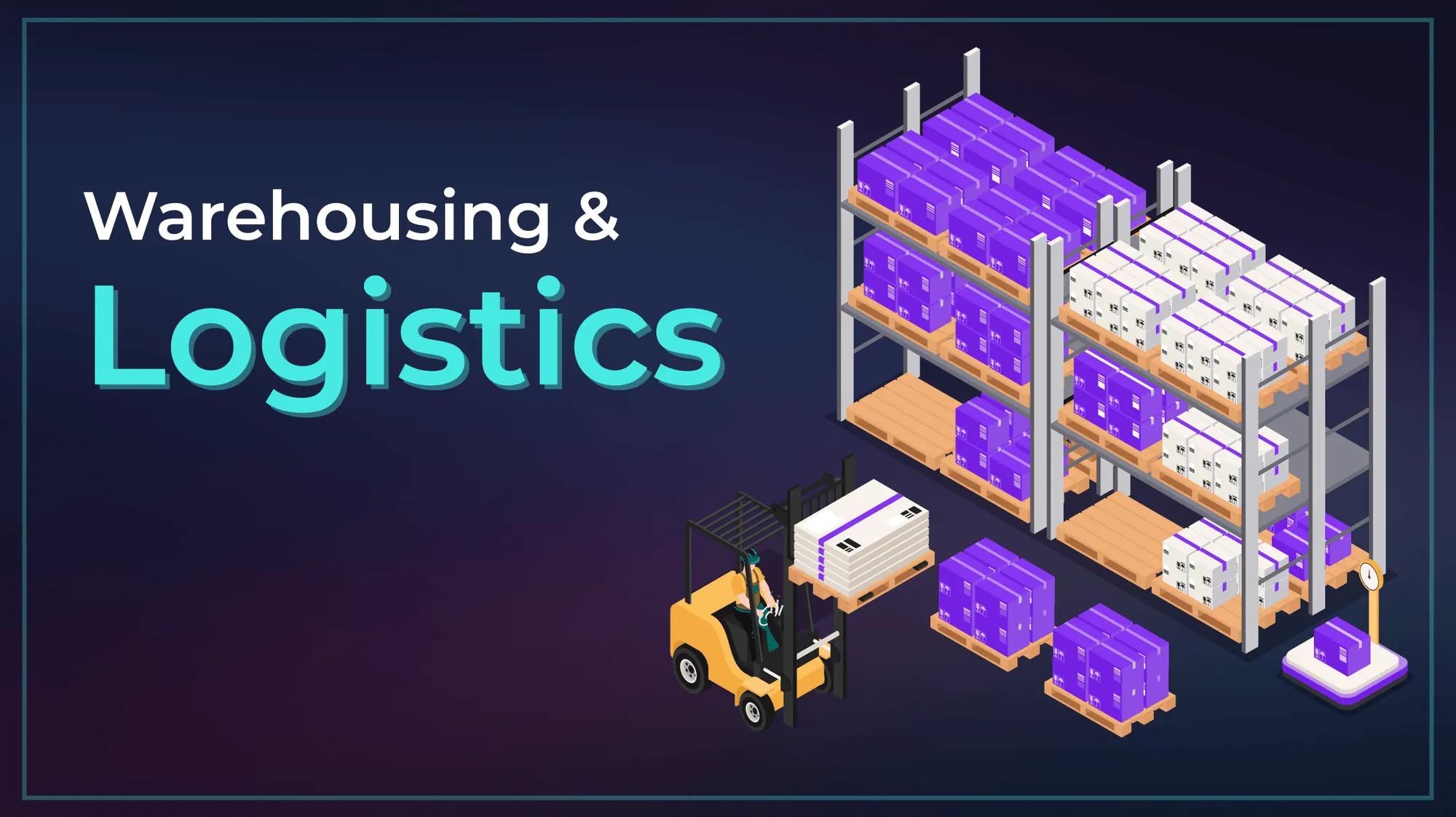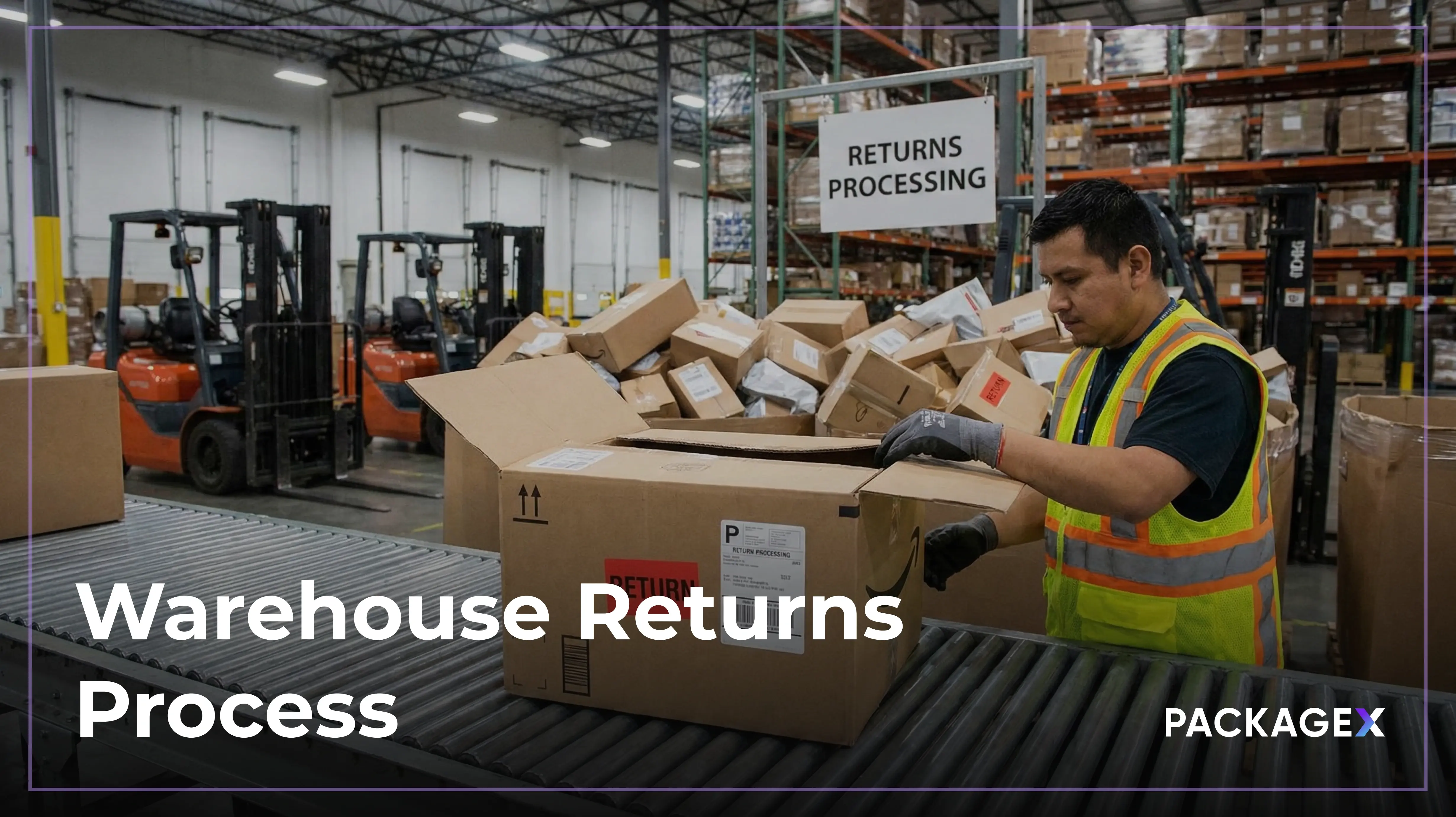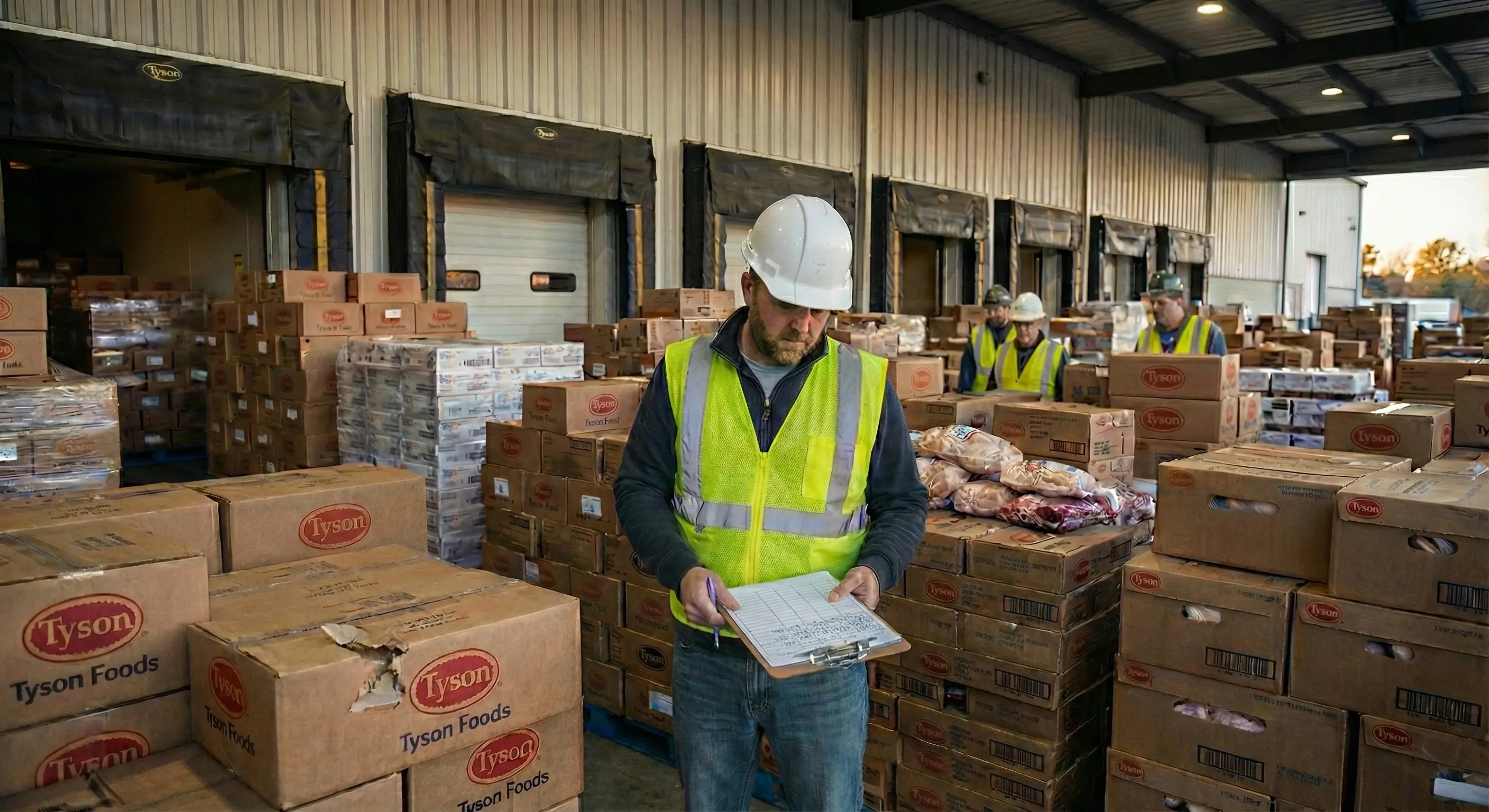Warehousing and logistics are often viewed as simple concepts, but in reality, they function like two connected parts of a complex system. Warehousing focuses on giving products a place to sit and wait, while logistics ensures those products reach the right destination at the right time. These functions overlap so much that many businesses treat them as one unified approach to logistics and warehouse management rather than separate operations.
As e-commerce continues to expand rapidly, warehouse and logistics strategies have become even more critical. Companies are trying to store more products in less space while keeping shipments moving with precision. The industry itself reflects this growth. The global market for warehousing and logistics is projected to reach USD 521.53 billion in 2025 and grow to USD 646.26 billion by 2030, supported by a 4.38% CAGR.
This guide will walk you through what warehouse and logistics operations involve, outline the core types and tools you should know, and provide practical solutions that help teams stay efficient in a fast-moving market.
What Is Warehousing and Logistics?
Warehousing and logistics work together to keep supply chains running smoothly, but each plays a different role within logistics and warehouse management.
Warehousing is the process of storing and managing goods inside a dedicated facility. It includes tasks such as receiving products, organizing inventory, and order fulfillment. In simple terms, warehousing ensures that products are stored safely and can be accessed quickly when needed.
Logistics is the broader system that manages how goods move from one point to another. It involves planning, coordinating, and executing the transportation, distribution, and overall flow of products from the initial shipment to the last mile delivery. The goal is to ensure goods reach the right place at the right time while maintaining cost efficiency and customer satisfaction.
So What Does Logistics and Warehouse Management Mean?
Warehouse and logistics management are inseparable. Each relies on the other to function effectively. Without one, the other simply wouldn’t exist. This strong connection underscores their importance in creating a smooth, efficient supply chain across industries. Together, they help businesses align customer demand.
Here are the differences between logistics and warehousing:
While some companies focus solely on logistics or warehousing, the best outcomes often come from integrating both into a unified system. Combining the strengths of each allows businesses to optimize operations, reduce costs, and maintain a streamlined supply chain.
Key Benefits of an Effective Warehouse Logistics Plan
A well-designed warehouse logistics plan does more than organize your storage space. It strengthens every part of your supply chain. When your workflows, systems, and people operate in sync. You can unlock measurable improvements across efficiency, cost, accuracy, and customer satisfaction.
Here is how a strategic warehouse logistics plan benefits your business:
1. Improved Inventory Management
A strong plan gives you clearer visibility into stock levels, movement patterns, and reorder points. With real-time tracking, you avoid issues such as overstocking, stockouts, and misplaced inventory. This level of control reduces waste, cuts storage costs, and ensures products stay available when customers need them.
2. Increased Operational Efficiency
Streamlined processes from receiving and putaway to picking, packing, and shipping eliminate unnecessary steps and speed up fulfillment. Logical warehouse layouts, standardized workflows, and technology like AI-driven barcode scanning all reduce manual effort. The result is faster order processing, fewer errors, and higher productivity.
3. Significant Cost Savings
Efficiency gains directly translate into lower operational costs. Businesses benefit from optimized labor use, reduced picking and packing time, and fewer returns due to fulfillment errors. Consolidated shipments, smarter space utilization, and better routing also reduce transportation and storage expenses, improving your bottom line.
4. Enhanced Customer Satisfaction
Customers expect fast, accurate, and damage-free deliveries, especially in e-commerce. When your warehouse operations run smoothly, orders ship on time and arrive exactly as expected. This reliability builds trust, strengthens brand loyalty, and encourages repeat purchases.
5. Better Risk Mitigation and Product Security
A good warehouse logistics plan includes physical security, controlled access, clear safety procedures, and systems that protect goods from theft, spoilage, or damage. Whether you handle electronics, perishables, pharmaceuticals, or high-value items, secure storage conditions help maintain compliance and protect product quality.
6. Scalability and Flexibility
A structured logistics plan gives you the agility to scale operations without disruption. Whether you are handling seasonal surges, expanding into new markets, or responding to supply chain shifts, streamlined workflows make it easier to adjust stock levels, labor needs, or storage capacity quickly.
7. Stronger Data-Driven Decision Making
Modern logistics systems, especially Warehouse Management Systems (WMS), centralize your operational data. Insights around inventory turnover, lead times, demand trends, and space utilization help you forecast more accurately and refine your logistics strategy over time.
Warehousing and Logistics Solutions
Warehouse logistics solutions are essential tools that enable businesses to track inventory in real-time, manage supply chains, and optimize warehouse operations. These warehouse logistics solutions streamline the flow of goods from storage to delivery.
Warehousing and Inventory Management
Warehousing provides a dedicated space for the storage of inventory, often for both short-term and long-term periods, catering to B2B e-commerce businesses. Effective inventory management software plays a crucial role in tracking stock levels, forecasting demand, and providing insights to optimize inventory handling. This ensures businesses avoid overstocking or running into shortages.
Order Fulfillment and Third-Party Logistics
Order fulfillment involves picking, packing, and shipping products to customers. Many businesses choose to outsource these operations to third-party logistics providers (3PL), which help manage warehousing, inventory control, and fulfillment tasks. These warehousing and logistics services integrate with eCommerce platforms to handle supply chain processes, improving efficiency and cost-effectiveness.
Key Operations in Warehousing Logistics
Several critical processes work together for smooth warehouse logistics, including:
- Picking and Packing: Pick and pack is the process of selecting products and preparing them for shipment.
- Shipping: Coordinating the transport of goods from the warehouse to customers.
- Cross-Docking: A method that reduces storage time by transferring goods directly from receiving to outbound transport without intermediate storage.
Reverse Logistics and Returns Management
Reverse logistics involves handling product returns so that returned goods are inspected, restocked, or disposed of correctly. This process is crucial for maintaining customer satisfaction and optimizing the inventory lifecycle.
Specialized Warehousing Solutions
Some industries require specialized storage solutions to accommodate specific needs:
- Temperature-Controlled Storage: Essential for storing perishable goods like food and pharmaceuticals, requiring precise temperature control.
- Bulk Storage and Kitting: Bulk storage is used for large quantities of raw materials, while kitting assembles components into sets for faster order fulfillment, ensuring more efficient packaging and shipping.
How to Budget for Warehousing and Logistics?
When budgeting for warehouse logistics, it’s important to assess all potential costs and plan for the future.
Here are the key factors to consider:
- Software Licensing Costs: Choose logistics software with licensing fees that align with your warehouse size and operations frequency, whether it’s cloud-based or on-premise.
- Optional Modules and Custom Development: Custom software development can be pricier upfront but may save money in the long term by better fitting your business needs.
- Server Hardware or Hosting: Based on your business's needs and scalability, decide whether to host your logistics software on cloud-based systems or physical servers.
- Maintenance and Ongoing Support: Budget for ongoing updates and DevOps support as your logistics needs evolve and require system modifications.
- Unforeseen Costs: Expect unexpected costs, such as software tweaks or equipment upgrades, which could account for 20% of your total budget.
Consider your business’s storage and distribution needs, ensure smooth software integration with other systems, and factor in all related costs, including transportation and labor.
How PackageX Empowers Warehousing and Logistics?
Here is how PackageX streamlines warehouse operations and boosts logistics efficiency across every workflow:
- Unified Operations Management: PackageX connects inventory, fulfillment, shipping, and tracking in a single platform, so teams can manage end-to-end warehouse activities without switching tools.
- Real-Time Package Visibility: Every item is tracked from arrival to delivery, giving teams complete transparency into stock movement, order status, and processing timelines.
- AI-Powered Data Digitization: PackageX converts labels, documents, and barcodes into structured data using AI. This reduces manual entry errors and speeds up tasks such as receiving, putaway, and reconciliation.
- Flexible Deployment Options: Whether you need cloud-based APIs, mobile applications, or seamless integration with your current systems, PackageX adapts easily to your warehouse environment.
- Enhanced Efficiency and Accuracy: Automated workflows, guided scans, and intelligent alerts reduce bottlenecks, improve picking accuracy, and accelerate delivery cycles.
PackageX gives warehouse and logistics teams the tools they need to operate more efficiently across every stage of the supply chain.
FAQs
What is the role of logistics in a warehouse?
Warehouse logistics play an important role in ensuring the right products are delivered accurately with every order. By reducing mistakes and minimizing returns, businesses can improve customer satisfaction, build stronger loyalty, and enhance their overall reputation.
What is the difference between logistics and warehousing?
Warehousing involves storing products in a warehouse before they're shipped out. On the other hand, logistics is all about planning the transportation and delivery of those products to customers. While warehousing and logistics are distinct tasks, they are closely linked and must work together effectively to ensure the supply chain runs smoothly.
What is warehousing in logistics?
Warehousing means storing physical inventory that is ready for sale or distribution. Businesses across various industries use warehouses to temporarily hold products in bulk before they are shipped to other locations or delivered directly to consumers.




